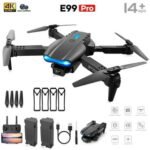Introduction
Overview of Walmart’s Drone Delivery Service
Walmart has taken bold steps into the realm of drone technology, pushing boundaries in retail logistics with its innovative drone delivery service. Imagine ordering your groceries online and having them delivered to your doorstep by a flying drone! This concept, once confined to science fiction, has become a reality thanks to Walmart’s pioneering efforts. This service is currently being tested in select locations, allowing customers to receive their online orders in as little as 30 minutes. Such speed is virtually unmatched in traditional delivery methods. With these drones capable of flying over traffic, they eliminate the hassle of road congestion. 🌐 Some key features of Walmart’s drone delivery service include:
- Speedy Deliveries: Orders can be delivered within 30 minutes or less, ensuring quick access to essential items.
- Range of Products: Customers can order a wide array of products, from groceries to household essentials.
- User-Friendly App: The process is straightforward. You can track your order via an intuitive app that enhances transparency.
This leap into drone delivery is part of Walmart’s broader strategy to enhance its competitive edge in the retail sector, especially against rivals like Amazon.
Importance of Innovation in Retail
In today’s fast-paced world, innovation isn’t just an option in retail—it’s a necessity. Companies that resist change run the risk of falling behind. Walmart’s commitment to incorporating drone technology is a clear acknowledgment of this fact. Innovation is crucial for several reasons:
- Customer Expectations: Today’s consumers crave convenience and speed. They expect retailers to deliver products faster than ever, and innovation, like drone delivery, is one way to meet these high expectations.
- Competitive Advantage: In the ever-evolving retail landscape, staying ahead means adopting new technologies before your competitors. If Walmart can streamline its delivery process using drones, it creates a unique selling proposition that sets it apart.
- Cost Efficiency: Innovations allow companies to cut costs in various areas. With drones, Walmart may reduce traditional delivery expenses, which can lead to savings that can be passed on to customers through lower prices.
- Sustainability: Drones present an opportunity to minimize carbon footprints compared to conventional delivery trucks. By reducing road traffic and emissions, Walmart can enhance its sustainability initiatives.
One personal story comes to mind when considering the evolution of retail. I recall a time when ordering a simple pizza felt like a major chore, waiting for it to arrive. Now, even the most complex orders can be flying into people’s backyards in mere minutes. The idea of bringing that service to grocery shopping paints a bright picture of our future. Of course, retail innovation isn’t just about adopting the latest gadgets; it’s about creating a seamless experience for customers. For example, Walmart is not just using drones but also investing in other technologies, such as artificial intelligence and robotics, to enhance the shopping experience. Another essential aspect is the focus on community needs. For instance, during the COVID-19 pandemic, the demand for contactless delivery skyrocketed, highlighting the importance of adapting to external circumstances. Walmart’s drone delivery service provides a solution that aligns with the growing requirements for safety and convenience. Incorporating innovations like drone delivery reflects a fundamental shift in mindset towards meeting the diverse needs of customers. Retailers remain in a race against time, and the companies that master innovation will ultimately emerge victorious. Stay tuned as we dive deeper into the history of drone delivery and explore how this technology has evolved over time, paving the way for its application in the retail sector, especially at giants like Walmart! 🚀
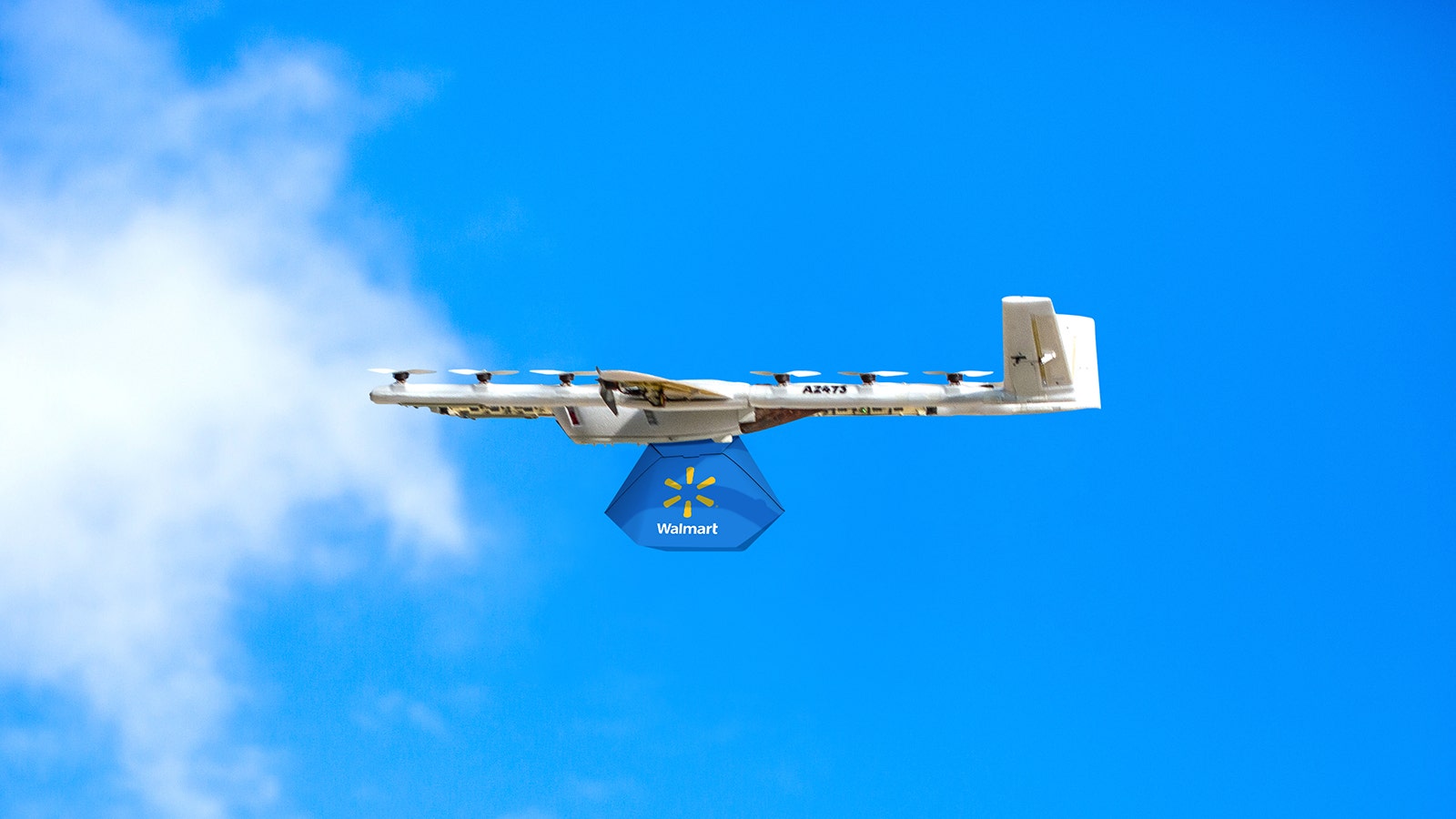
History of Drone Delivery
Key Milestones in Drone Technology
To truly appreciate Walmart’s foray into drone delivery, it’s essential to understand how we got here. Let’s take a quick journey through the key milestones in drone technology.
- Early Development (1910s-1950s): The first drones, originally used for military purposes, date back to the early 20th century. During World War I, the Kettering Bug was one of the first attempts to create a drone, albeit rudimentary. Fast forward to the 1950s, when the U.S. military developed radio-controlled aircraft for training purposes.
- Commercialization (1990s): The idea of using drones for commercial applications began gaining traction. However, regulatory challenges and technology limitations kept these plans grounded.
- Consumer Drones Emerge (2000s): With rapid advancements in technology, particularly in battery efficiency and GPS capabilities, companies began developing smaller, more precise drones. This period saw the introduction of popular consumer drones, like the ones produced by DJI.
- Regulatory Framework (2016): The FAA (Federal Aviation Administration) introduced Part 107, allowing for the commercial use of drones in the United States. This regulation marked a turning point, setting the stage for businesses to explore drone delivery.
- First Commercial Delivery (2016): In 2016, Google’s parent company, Alphabet, conducted a successful commercial drone delivery through its Wing project in Australia. This milestone flagged the potential for drone delivery services to expand globally.
- Continued Growth and Testing (2020-present): Companies like Amazon, UPS, and, of course, Walmart began testing drone delivery solutions on a broader scale to meet growing consumer demand, especially during the pandemic. Each test opened doors to new potential.
These milestones exhibit the tremendous progress in drone technology, transforming it from a military tool into a consumer powerhouse. It’s fascinating to think about how quickly technology evolves. Just a few decades ago, the thought of ordering a package that floated to your doorstep seemed fanciful. Now, it’s bordering on the everyday!
Adoption of Drones in Retail Sector
As drone technology has matured, the retail sector has seized the opportunity to innovate its delivery methods. The growing e-commerce market has created an ever-increasing need for swift, efficient delivery solutions. Here’s how retailers, including Walmart, have started adopting drones:
- Pilot Programs: Many retailers initiated pilot programs to experiment with drone deliveries. For instance, Walmart’s testing phase began in 2020, exploring how drones could effectively deliver groceries, thereby enhancing the customer service experience.
- Increased Efficiency: Retailers are discovering that drones can drastically reduce delivery times. Studies have shown that approximately 30% of online shoppers express frustration over delivery delays. By leveraging drones, retailers can offer same-day, or even immediate, delivery options that satisfy these impatient consumers.
- Cost-Effective Solutions: Drones represent an opportunity to reduce costs for retailers. According to some estimates, last-mile delivery via drones can be significantly cheaper than traditional methods, particularly as demand increases. This potential cost-effectiveness is crucial for retailers striving to keep operating expenses low.
- Enhancing Accessibility: Drones can access remote or underserved areas that traditional delivery methods might find challenging. Picture a college student living on campus, too busy to head to the store for essential supplies. A drone can swoop in and deliver that package straight to the student in no time!
- Consumer Acceptance: Surveys indicate a growing comfort level among consumers with drone delivery. The more people experience it, the more they embrace the convenience. Just imagine the thrill of watching a drone drop off your order—it’s likely to create a memorable experience.
As a final note, the adoption of drones in the retail sector is not without its challenges, including regulations and public perceptions. Yet, as with all technology, willingness to adapt and innovate can determine success. Retailers like Walmart stand at the helm of this exciting movement, significantly impacting how products are delivered to customers. With a clear history behind us, let’s now explore the specifics of Walmart’s drone delivery service implementation and the various partnerships that are fueling this innovation. ✈️
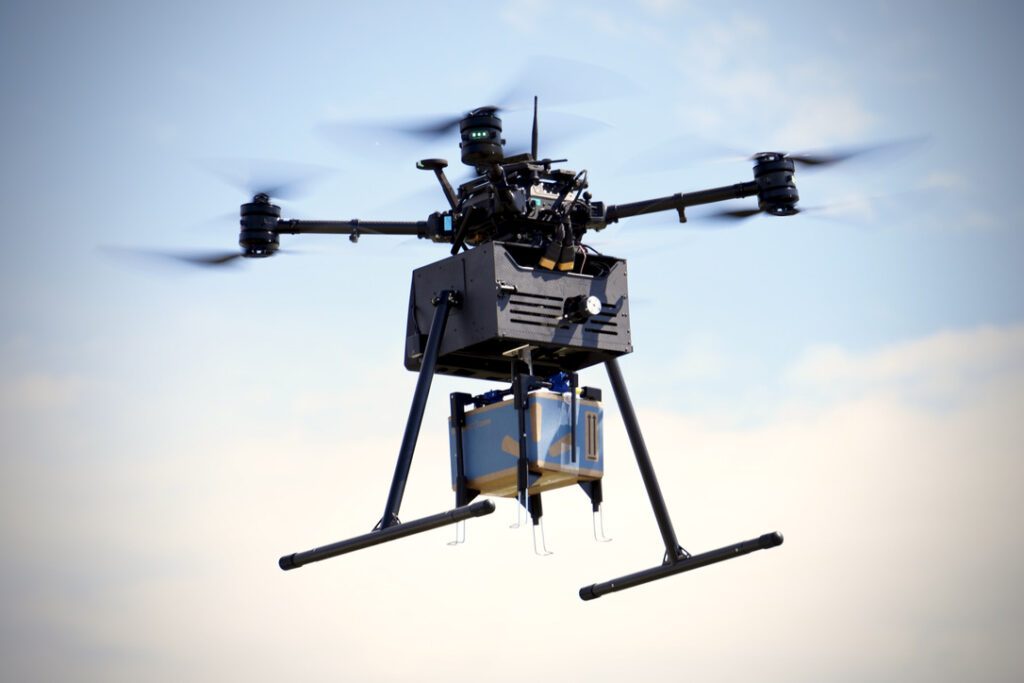
Walmart’s Drone Delivery Service Implementation
Partnership with Drone Companies
Walmart’s ambitious journey into drone delivery wouldn’t be possible without strategic partnerships with leading drone technology companies. Collaboration is key to innovation, and Walmart has smartly recognized this. To effectively launch its drone delivery service, Walmart has teamed up with several prominent players in the drone industry. Companies like DroneUp have emerged as critical partners, leveraging their expertise in drone logistics to help Walmart test and fine-tune their operations. Here are some pivotal aspects of these partnerships:
- Shared Expertise: By collaborating with specialized drone companies, Walmart is tapping into a well of knowledge and experience that it wouldn’t have on its own. This allows for smoother implementation and faster problem-solving as technical challenges arise.
- Regulatory Navigation: The regulatory landscape surrounding drone operations can be cumbersome. Partnering with established drone companies means that Walmart can benefit from their understanding of FAA regulations and compliance, ensuring seamless navigation in a complex environment.
- Resource Optimization: Leveraging their partners’ existing infrastructure and technology not only speeds up deployment but also helps Walmart focus on enhancing customer experience rather than getting bogged down in technical details. It’s like bringing in a seasoned chef to elevate your culinary game—sometimes, you need a little expert help!
- Innovative Developments: With industry partners, Walmart is in a position to push for technological advancements that enhance the user experience—think about drones equipped with advanced sensors or AI for better navigation and delivery efficiency.
As these partnerships blossom, they pave the way for a refined and effective drone delivery strategy that promises to revolutionize how consumers interact with retailers.
Testing Phases and Results
Jumping into implementation, Walmart has conducted a series of testing phases to gradually roll out its drone delivery service. Testing is crucial, as it allows the company to assess everything from the drones’ efficiency to customer interactions. Here’s a closer look at these phases:
- Initial Pilot Programs: In 2020, Walmart launched pilot programs in select cities such as Arkansas and North Carolina. During these tests, the goal was to evaluate operational logistics and gather customer feedback. It’s like those early beta tests where users help refine everything before the grand reveal.
- Evaluating Performance: During testing, Walmart carefully monitored key performance indicators such as delivery speed, reliability, and customer satisfaction. Early results known to be promising indicated that some deliveries were being made in remarkable timeframes—often under 30 minutes!
- Customer Engagement: A significant part of the testing involved engaging customers. Surveys and feedback forms were integral in understanding how consumers perceived the service; did they appreciate the speed? Was the experience seamless? The answers derived from these inquiries help Walmart tailor the experience to meet customer needs better.
- Safety Checkpoints: Drones may be cutting-edge technology, but safety is paramount. Walmart has invested considerable effort in testing under various conditions to ensure that drones can navigate safely through different weather scenarios and urban environments.
- Scaling Up: Following the initial success of the pilot program, Walmart has looked to scale its drone delivery efforts gradually. The initial team of test drones is expected to expand by adding more regions and potentially exploring delivery options for a broader range of products beyond groceries.
One story that captures the excitement around these tests is from a neighbor of mine, who was one of the testers for the pilot program. The thrill in her voice as she recounted a drone hovering above her yard and lower her grocery bags was contagious. She mentioned how solid the experience felt—from placing the order to witnessing the delivery firsthand—making her a fervent advocate for the future of drone delivery. In summary, Walmart’s approach to implementing its drone delivery service has been strategic and inclusive, emphasizing partnerships and extensive testing. With a solid foundation being established, we’ll now explore the benefits this innovative delivery method can offer to the retail landscape. 📦✨
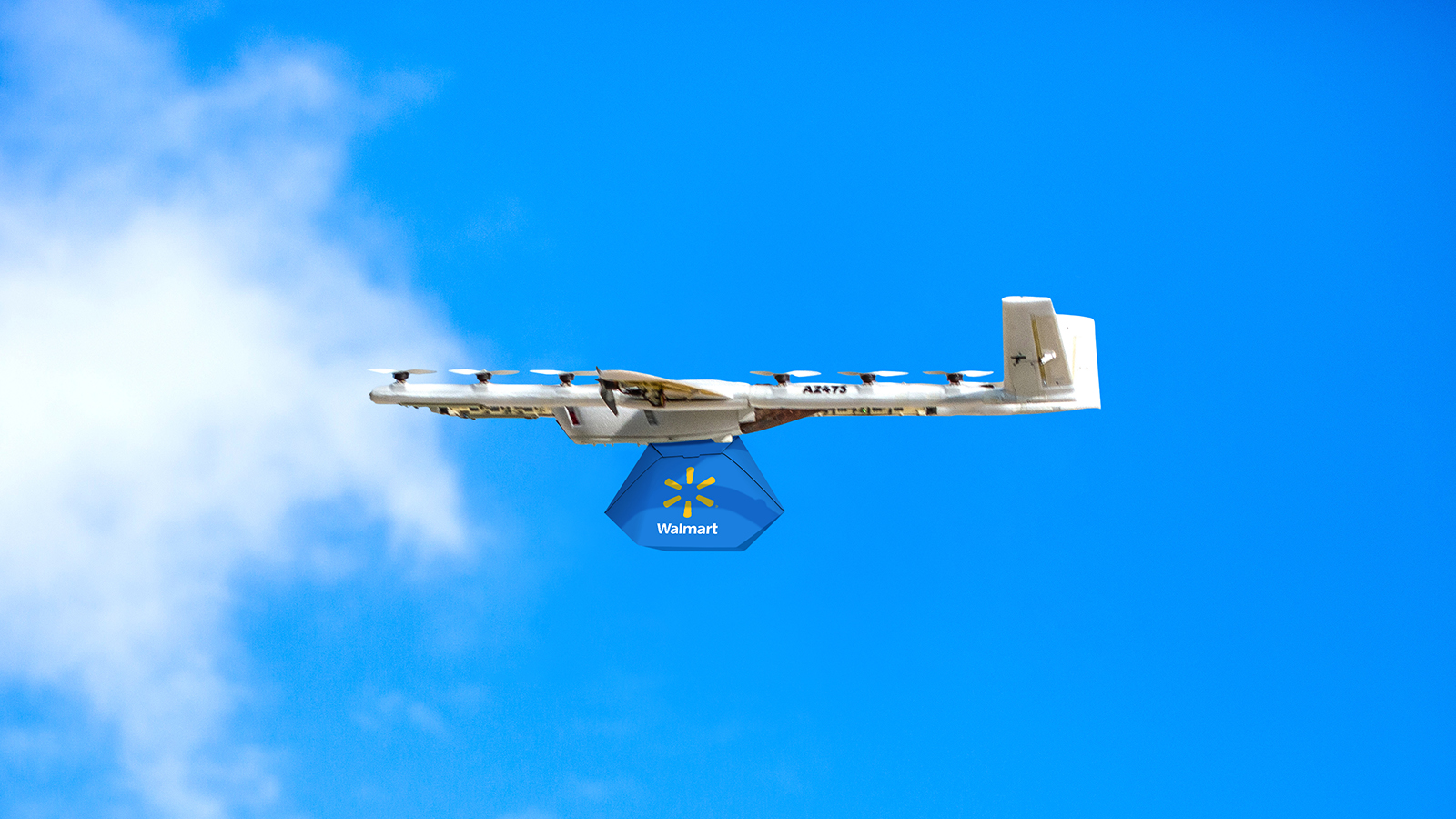
Benefits of Drone Delivery in Retail
Increased Efficiency and Speed
As Walmart’s drone delivery service begins to take flight, one of the standout advantages is the remarkable efficiency and speed that drones provide. Imagine this: you order a last-minute picnic kit for a sunny afternoon, and within minutes, a drone delivers everything from sandwiches to drinks right to your yard. Sounds dreamy, right? It’s not just a fantasy; it’s becoming a reality! Let’s delve into the specifics of how drone delivery enhances efficiency and speed in the retail sector:
- Rapid Delivery Times: Drones can bridge the gap between order placement and fulfillment faster than traditional delivery methods. We all know the frustration of waiting days for a package. Drones have the potential to make deliveries in as little as 30 minutes, significantly shortening wait times.
- Bypassing Traffic: Unlike delivery trucks that often get caught in congested streets, drones fly directly to their destination. This ability to bypass traffic not only speeds up deliveries but also reduces the unpredictability of arrival times—customers appreciate knowing exactly when to expect their deliveries.
- Real-Time Updates: Most drone delivery systems are equipped with tracking technologies that provide customers with real-time updates. You can watch your order progress in real-time, creating a transparent and exciting experience for the consumer. No more guessing games—just an enriching journey from warehouse to your doorstep!
- Operational Efficiency: Drones can operate during off-peak hours, optimizing delivery times even further. Retailers can schedule deliveries based on demand trends, ensuring that resources are allocated efficiently.
- Enhanced Distribution: Drones can reach locations that may be hard for traditional delivery vehicles to access, such as rural or remote areas. This flexibility allows retailers to tap into previously inaccessible markets, broadening their customer base.
For many, the idea of receiving items via drone may be novel, but as technology advances and consumer habits evolve, this rapid and efficient service is expected to become a norm in retail.
Cost-Effectiveness and Environmental Impact
Beyond just speed and efficiency, drone delivery offers pivotal cost advantages and a reduced environmental footprint, contributing positively to both retailers and the planet.
- Reduction in Delivery Costs: Employing drones can ultimately decrease the costs of last-mile deliveries. Traditional delivery methods heavily depend on vehicle fuel and labor costs, whereas drones optimize resource consumption. Some studies suggest that last-mile delivery costs could drop by nearly 50% when using drones compared to conventional methods.
- Lower Labor Costs: As delivery operations move to drones, the reliance on a large workforce for deliveries may diminish. This doesn’t mean job losses; rather, it allows workers to focus on other essential areas of retail, such as customer service or inventory management, thus reorienting labor toward impactful roles.
- Eco-Friendly Solutions: Drones typically run on electric power, which can lead to a significantly lower carbon footprint compared to gas-guzzling delivery trucks. This is crucial as consumers today are increasingly concerned about sustainability. Retailers like Walmart are thus positioning themselves as environmentally conscious options, which can significantly enhance brand loyalty.
- Minimized Packaging Waste: Since drones can make multiple quick deliveries, there is an opportunity to streamline packaging. Instead of needing bulky shipping containers, smaller and more efficient packaging can be utilized, cutting down on waste.
- Citizen-Friendly Initiatives: Some retailers have even started drone delivery programs that focus on delivering essential items to communities in need—food packages to low-income neighborhoods, for example. This type of initiative not only demonstrates corporate responsibility but also showcases how technology can be used for good.
To illustrate this, I recently spoke to a friend who received a small care package via drone. Her excitement wasn’t just about the package, but also about knowing that it was delivered without adding to traffic congestion or emitting harmful emissions! In conclusion, the benefits of drone delivery in retail extend beyond mere novelty—spanning increased efficiency, speed, cost savings, and contributions to environmental sustainability. As we continue to explore this revolutionary technology, it’s clear that it holds the potential to redefine retail logistics for the better. 🚀🌍
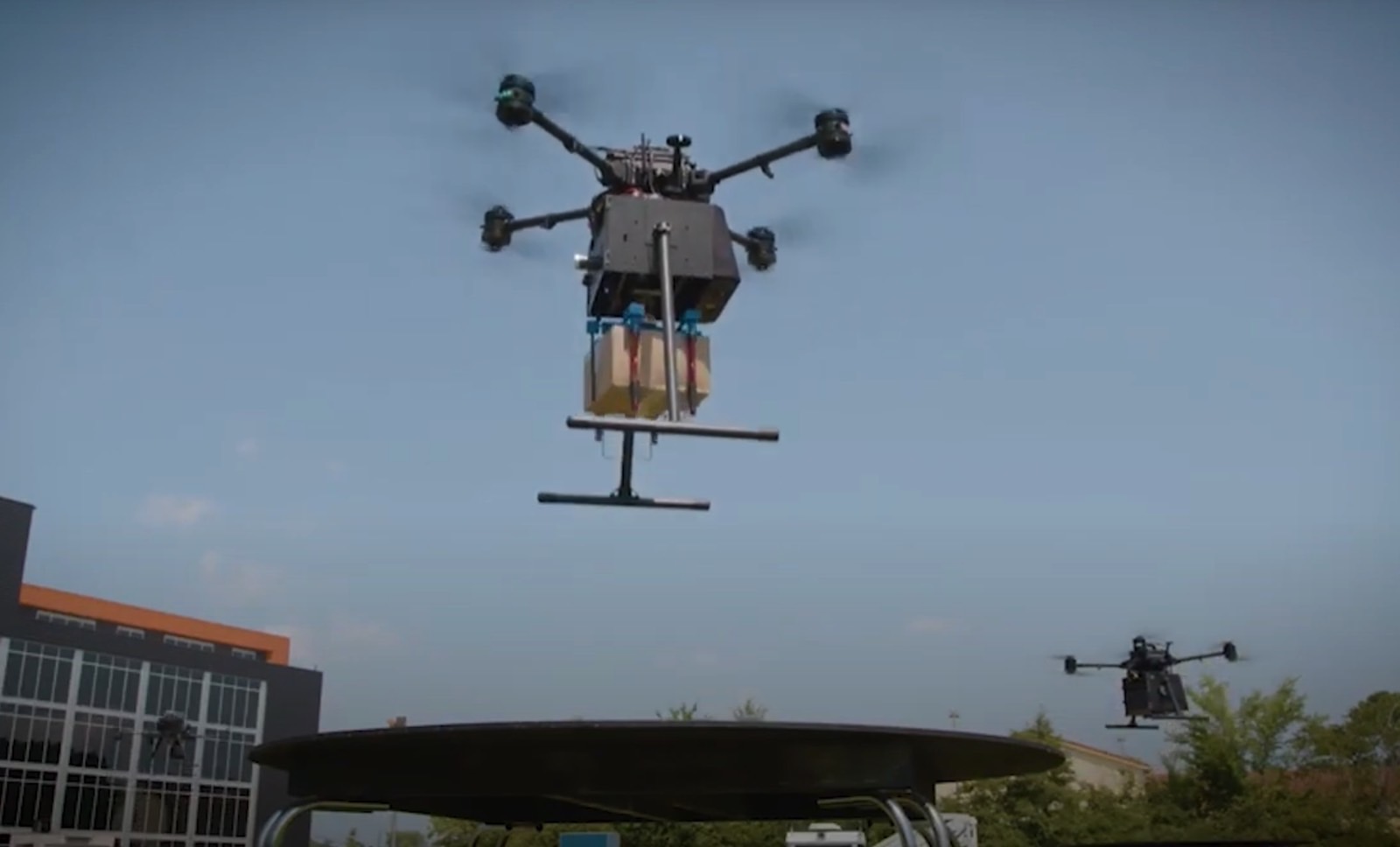
Challenges and Regulations
Safety and Security Concerns
While the potential of drone delivery is impressive, it’s crucial to address the myriad challenges that come with this innovative technology. One of the most significant concerns surrounding drone operations revolves around safety and security. First up, let’s talk about safety. Drones, by their nature, operate in multi-dimensional spaces—this can lead to issues if not managed properly. Here are some key safety considerations:
- Collision Risks: Drones fly in airspace shared with commercial planes, helicopters, and other aircraft. The risk of collision looms large, creating the need for robust navigational systems equipped with effective obstacle avoidance. Without such systems, the safety of the flight can be compromised.
- Public Safety: When drones are in use, they might fly over residential neighborhoods or densely populated areas. If a drone malfunctions or loses control, the potential for accidents increases, raising concerns among nearby residents. Imagine a drone malfunctioning mid-delivery and plummeting into someone’s backyard! It’s not a pleasant thought.
- Malicious Activities: Just like anything connected to technology, drones can be vulnerable to hacking or unwanted interference. Concerns grow regarding unauthorized interception, where individuals could potentially manipulate drone operations. This creates a security conundrum, as companies must ensure adequate protections are in place.
To combat these safety concerns, companies implementing drone delivery need to focus on advanced technologies and protocols. Drones must be equipped with systems for precise navigation and real-time monitoring, ensuring they can avoid hazards effectively. Safety involves not only constructing reliable technology but also fostering public trust through transparency in operations.
Compliance with Aviation Laws
Navigating the regulatory landscape is another considerable hurdle for drone delivery services. In the U.S., the FAA (Federal Aviation Administration) has instituted a framework for regulating commercial drone operation, but companies need to stay compliant with multiple laws:
- FAA Regulations: Under the Federal Aviation Administration’s Part 107 rules, drone operators must adhere to specific protocols, including obtaining necessary certifications and maintaining visual line-of-sight during operations. Failure to comply can result in hefty fines and reputational damage.
- Airspace Restrictions: Certain zones, such as those surrounding airports, military bases, and urban areas, have strict flight restrictions in place. Understanding and navigating these restrictions requires meticulous planning. Drones cannot just take to the skies anywhere—they need designated flight paths to operate safely.
- Privacy Laws: With drones equipped to capture images and data, retailers must be mindful of privacy regulations. Consumers might be uneasy about the prospect of being filmed or monitored without consent. Companies must strike a balance between operational efficiency and respecting consumer privacy standards.
Personal anecdote time! A few months back, I watched a documentary on drone technology, featuring a segment about a drone delivery pilot program in a major city. The community was excited about the novelty, but residents expressed concerns over their privacy being invaded by drones capturing live footage. It was clear that while residents were eager for efficiency, they also wanted guarantees that their personal space wouldn’t be compromised. As we think about compliance, the best approach for retailers is proactive engagement with regulators, local communities, and stakeholders. Building collaboration ensures that companies are aligned with the rules and can implement necessary policy changes effectively. Navigating challenges and regulations will be an ongoing journey as drone technology in retail continues to evolve. Keeping safety and compliance at the forefront will not only mitigate risks but also foster trustworthiness among consumers. So, while the road to widespread drone delivery may have its bumps, it undoubtedly holds incredible possibilities for the future of retail! 🚁📜
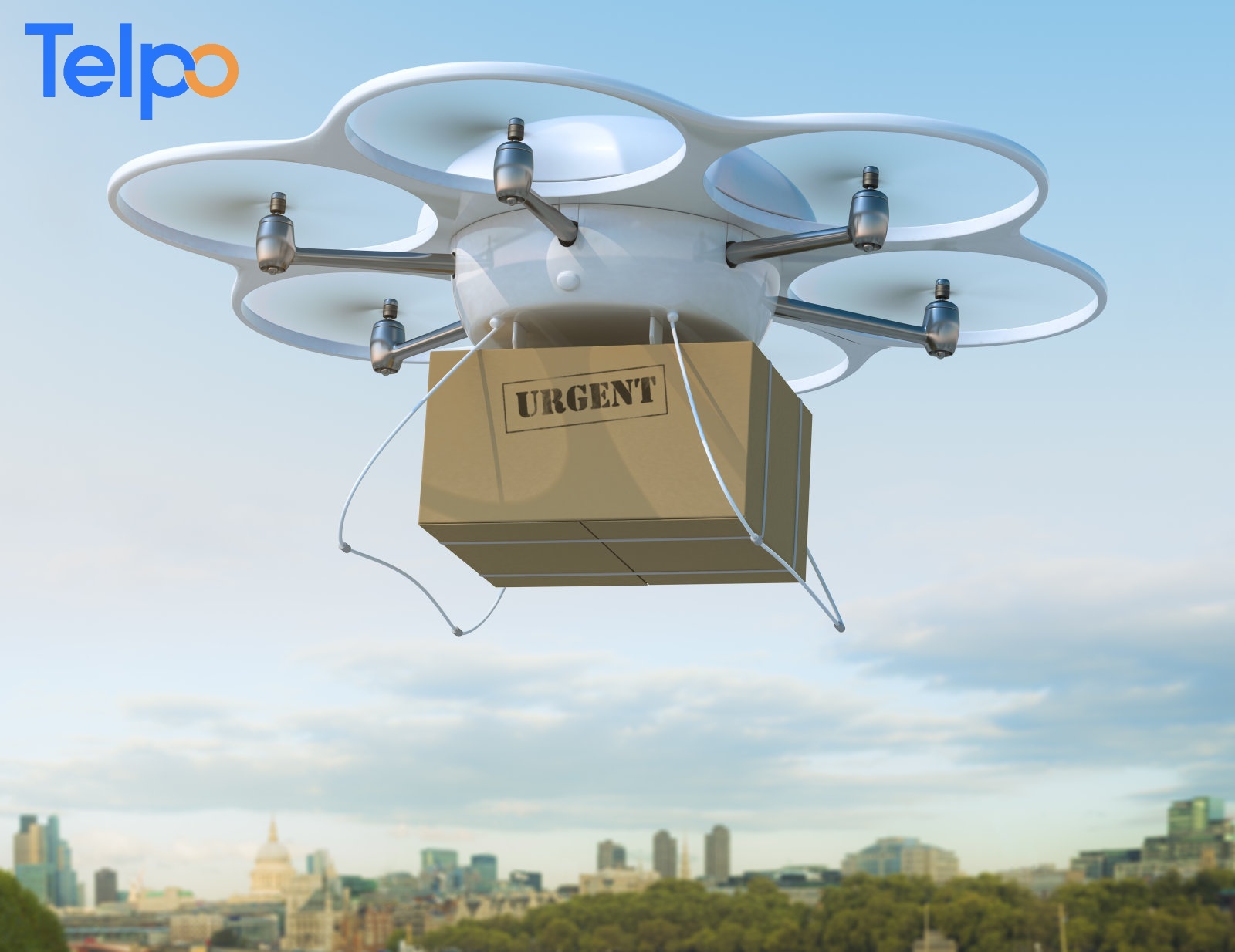
Comparison with Traditional Delivery Methods
Speed and Convenience
When it comes to the winner in the race of delivery methods, speed and convenience often reign supreme! Walmart’s drone delivery service promises remarkable efficiency compared to traditional delivery methods, and here’s how:
- Delivery Speed: At the heart of the discussion about drones is their incredible potential for rapid delivery. Traditional delivery through trucks can take anywhere from a few hours up to several days, depending on distance and logistics. In contrast, drones can deliver items in as little as 30 minutes. Imagine needing a last-minute ingredient for dinner—waiting hours for a delivery can be frustrating! Drones swoop in and save the day.
- Real-Time Tracking: Drones can offer precise tracking capabilities, allowing you to monitor your order from the moment it’s dispatched until it lands on your doorstep. This level of transparency is often lacking with traditional delivery methods, where tracking might not be updated until the package is on the final leg of its journey.
- Ease of Ordering: Drone delivery services often come with user-friendly apps or platforms, allowing customers to place orders quickly and effortlessly. This convenience is vital in today’s culture of speed; if you can place an order in just a few taps on your smartphone, it feels that much easier to make last-minute purchases!
- Accessibility: Drones can reach areas that traditional delivery methods sometimes struggle to access, especially in rural or hard-to-reach locations. If you live in a countryside area, you might often face delays or lack of service from conventional vehicles. Drones eliminate those concerns, bringing products right to your door without navigational hurdles.
Now, on a personal note—I’ve started using delivery apps for groceries and essentials, and occasionally, you’re left waiting and wondering where that delivery truck is. The idea of knowing my order could be in the air, zipping directly toward me in a fraction of the time, is simply delightful!
Customer Feedback and Satisfaction
Understanding how customers perceive drone delivery compared to traditional methods is crucial for any retailer’s success. Here’s what the initial customer feedback is indicating:
- Higher Satisfaction Ratings: Early adopters of drone deliveries report exceptionally high satisfaction levels due to the speed and convenience. When customers can receive orders quickly without the hassle of delayed deliveries, they are more likely to sing praises about the service. Many are taking to social media to share their excitement and satisfaction—as if sharing a thrilling experience with friends!
- Nostalgic Experiences: Some customers enjoy the novelty of drone delivery. Witnessing a drone in action sparks a sense of wonder and excitement, reminiscent of watching science fiction films come to life. This adds an emotional layer to the shopping experience, contributing significantly to customer satisfaction.
- Feedback Loops: Retailers are actively encouraging customer feedback on their drone delivery experience. It’s essential to gather insights on everything from ordering ease to delivery precision. Surprisingly, many customers have shared that they appreciate the company’s attention to detail and reliability, leading to stronger brand loyalty.
- Challenges in Expectation Management: However, it’s essential to recognize that drone delivery isn’t without its hiccups. Customers may have heightened expectations based on swift delivery promises. Drones aren’t immune to problems like inclement weather, technical issues, or delays in specific areas—some users have experienced frustration when these factors impact delivery times.
A friend of mine recently used a pilot drone delivery service and was thrilled about the speed, but also puzzled when her order took longer than expected due to unforeseen weather. It’s a reminder that, while the innovation is exciting, traditional delivery systems have decades of infrastructure behind them for a reason! In conclusion, the stark contrast in speed, convenience, and customer feedback offers a compelling case for drones as the next wave in delivery methods. As the technology evolves and refines itself, the potential for greater customer satisfaction is clearly on the horizon. The true test, however, will lie in adapting these groundbreaking services to meet and exceed customer expectations consistently. 🚀📦
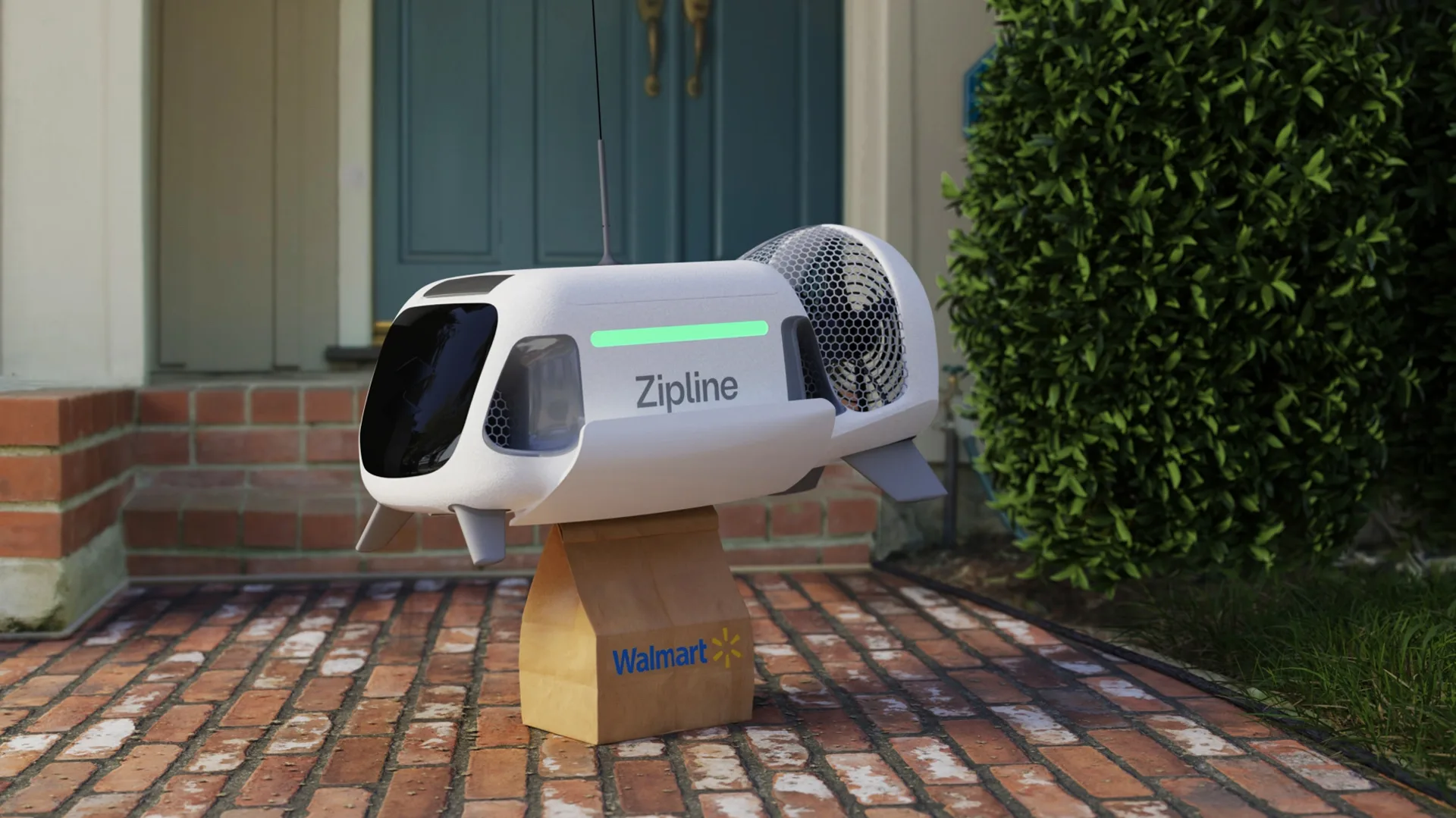
Future of Drone Delivery in Retail
Potential Expansion and Scale
With the revolutionary advancements made in drone delivery, the future looks incredibly promising for retail. The potential for expansion and scaling of these services is immense. While Walmart’s drone service is already making waves, imagine what could unfold in the coming years!
- Geographic Reach: Right now, drones are largely deployed in select urban and suburban areas. However, the potential for reaching rural and underserved communities is vast. Drones can play a crucial role in providing essential goods to locations that may have limited access to retail outlets. Picture this: families living in isolated regions receiving quick deliveries of groceries or medications—an essential lifeline that enhances their quality of life!
- Partnerships with Local Businesses: As drone delivery becomes more mainstream, partnerships between large retailers and local businesses or farms could arise. Think about local farmers teaming up with drone services to deliver fresh produce directly to consumers. This not only supports local economies but also caters to the growing consumer demand for fresh, local food.
- Diverse Product Offerings: Currently, drone deliveries often focus on specific categories like grocery items, but the future may see a more diverse range of products being delivered. From electronics to fashion accessories, as the technology becomes more refined, the possibilities are limitless. Imagine ordering anything from a new gadget to a trendy outfit, with a drone zooming it to your doorstep in no time!
- Global Adoption: Retail giants around the globe are already exploring drone technology. As successful models are established in one region, other retailers may replicate these strategies, leading to a worldwide shift toward drone delivery. It would not be surprising to see an explosion of drone delivery services popping up in various countries.
Reflecting on this potential expansion, I remember a biking trip I took to a remote village where accessing food and necessary supplies was a challenge for the locals. The thought of drones making a difference in such communities is inspiring—it could transform lives!
Technological Advancements and Innovations
Technology has always been a driving force behind any innovation, and drone delivery is no exception. The future promises continuous technological advancements that will enhance drone capabilities and overall service. Here are some innovations we might expect to see:
- Improved Navigation and AI: With advancements in artificial intelligence and machine learning, drones will become better at navigating complex urban landscapes. Enhanced algorithms can help them dodge obstacles or reroute based on real-time traffic data, pushing operational efficiency even further.
- Autonomous Operations: Imagine a world where drones operate autonomously without human intervention! As drone technology continues to evolve, we may enter a phase where these flying robots can take off, navigate, deliver, and return to their base completely on their own, enhancing reliability and increasing delivery volume.
- Enhanced Safety Measures: The integration of new safety technologies will pose a significant boost to consumer confidence. Advanced sensors could monitor surroundings and perform geofencing to avoid restricted areas, ensuring safe operations. Newly developed materials may also enhance drone design for better durability and performance.
- Eco-Friendly Innovations: Sustainability is becoming a huge focus for retailers, and drone technology could evolve to become even more environmentally friendly. In the future, we could see solar-powered drones or those using alternative fuels to reduce their carbon footprints. This will align perfectly with the escalating consumer demand for sustainable practices.
- Advanced Delivery Options: Think multi-package deliveries! Future drones could be equipped to hold multiple deliveries at once, making the delivery network even more efficient. Picture one drone making several stops in a neighborhood, dropping off packages for multiple customers in one round trip.
Reflecting on how much I admire innovative startups, I recently came across a company developing drones that can analyze an area’s delivery patterns using real-time data. The potential for improving delivery times and efficiency is staggering—who wouldn’t be excited about that? In conclusion, the future of drone delivery in retail is a landscape filled with opportunities and advancements. As expansion into new territories and innovations become reality, consumers can look forward to an increasingly convenient, efficient, and sustainable shopping experience. The sky truly is the limit! 🌌✨🚀



